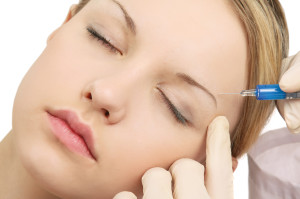
Believe it or not, it started with bad sausage. In 1820, a German doctor named Justinus Kerner was assigned to determine the cause of death of several deceased persons in a row. It turned out that their silent killer was actually botulism from spoiled sausages, riddled with a toxin known as botulinum, the main ingredient in Botox. He recorded the effects of the poisoning, noting that the deceased had noticeably droopy eyelids, muscle weakness, and paralysis. Each of these symptoms gives the appearance of stretched skin and the diminishing of wrinkles. To test his hypothesis, he even injected a small dose of the poison in the sausage into his own body.
Over the next century, there were many other deaths caused by botulism, which increased scientist’s and doctor’s understanding of the toxin. Though there were obvious changes to the skin and muscles of the victims, no one ever thought to use botulinum as an anti-aging method. In fact, in World War II, the United States saw it as a deadly weapon, with a plan to have Chinese prostitutes drop botulinum capsules into Japanese officers’ drinks.
The research into the botulinum toxin led scientists to discover better uses for it in the 1950’s. They discovered that a small dose of botulinum was successful in treating muscle spasms. Several years of more research throughout the 1960’s and 1970’s, led to the discovery that botulinum could actually help solve the problem of crossed eyes. This was tested and proven by scientists who injected monkey’s with the toxin, with positive results.
Through the 1980’s, researchers for Allergan dived deep into the study of botulinum, and soon discovered that the tests done by their predecessors were all true, and in 1989, Allergan released BOTOX, the first botulinum toxin proven by the FDA to cure eyelid spasms, squinting problems, and crossed eyes.
In 2002, the FDA finally approved the use of botox for cosmetic reasons, particularly to eliminate wrinkles in the forehead, thus beginning the craze for botox injections. However, over the last 25 years since its inception, botox has been proven to be a significant aid in the treatment of a number of health problems, including cervical dystonia, overactive bladder, severe underarm sweating, urine leakage, chronic migraines, and muscle stiffness, along with the treatments for eye muscle problems. All of this goes to show that though botox is primarily known for it’s cosmetic wonders, it’s long, highly researched history has made it an important drug for both health and beauty.
